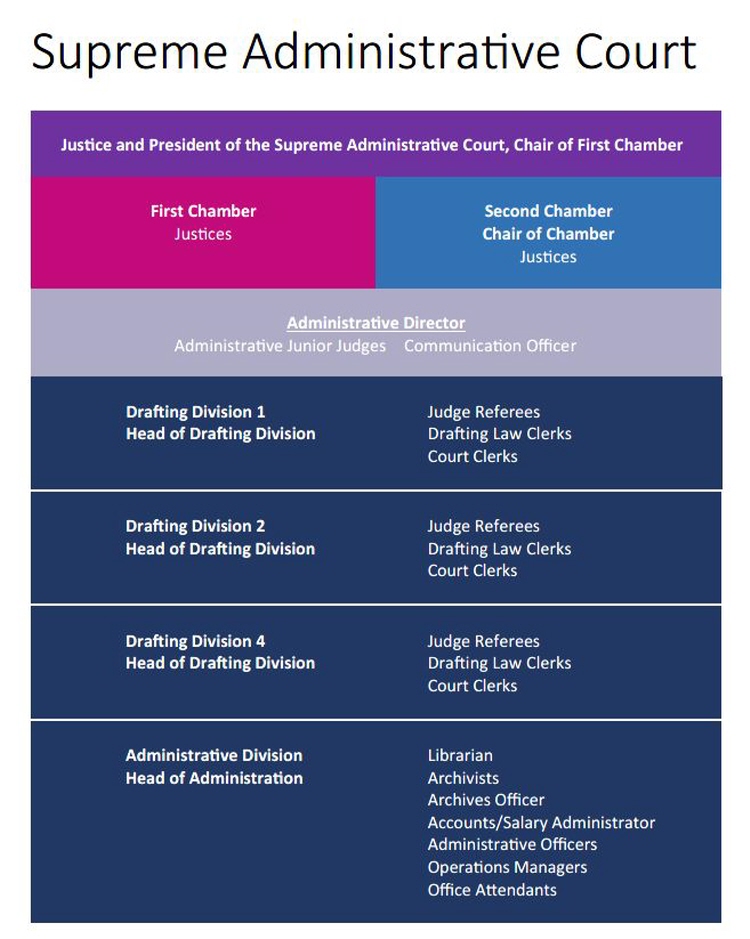The Supreme Administrative Court has approximately 80 staff members of whom 16 are Justices. Justice Helena Jäderblom is the chair and president of the Court. The Court also has an administrative director. Judge referees and court clerks are divided into three drafting divisions, each under the leadership of a head of drafting division. There is also an administrative division under the leadership of the head of administration.

Justices of the Supreme Administrative Court
The members of the Supreme Administrative Court are judges who hold the title “Justice”. Pursuant to the Administrative Court Act (SFS 1971:289), the Court shall have 14 Justices or more as deemed necessary. Two of the Court’s current 16 Justices serve on the Council on Legislation. As a general rule, members of the Council on Legislation are appointed for a term of one year.
Justices serve in one of two chambers, both of which are equally competent to try the cases brought before the Court. Helena Jäderblom and Justice Henrik Jermsten are the chairs of the respective chambers.
Administrative director
Katarina Grén is the administrative director of the Supreme Administrative Court. The entire staff, with the exception of the Justices, is part of the secretariat.
Drafting divisions
Cases are prepared by the Court’s three drafting divisions, each of which has a head of the division. The heads of the drafting divisions lead and plan the work of their division. Each division is responsible for different types of cases.
Each drafting division is staffed by judge referees and court clerks. Judge referees are court-trained attorneys or other attorneys with relevant qualifications and backgrounds. Their principal task is to administer and investigate the cases and present them to the Justices with a proposal for a ruling.
Court clerks register and participate in the ongoing administration of the cases referred to the Court. Court clerks send judgments and decisions to the parties of the case.
The administrative division
The administrative division supports the Court’s case preparation and judicial operations. The division also provides services to the public, e.g., by answering questions, releasing documents and explaining the Court’s operations. The division’s work is conducted under the leadership of a head of administration. This includes administrative and support functions such as archiving, library and office services.